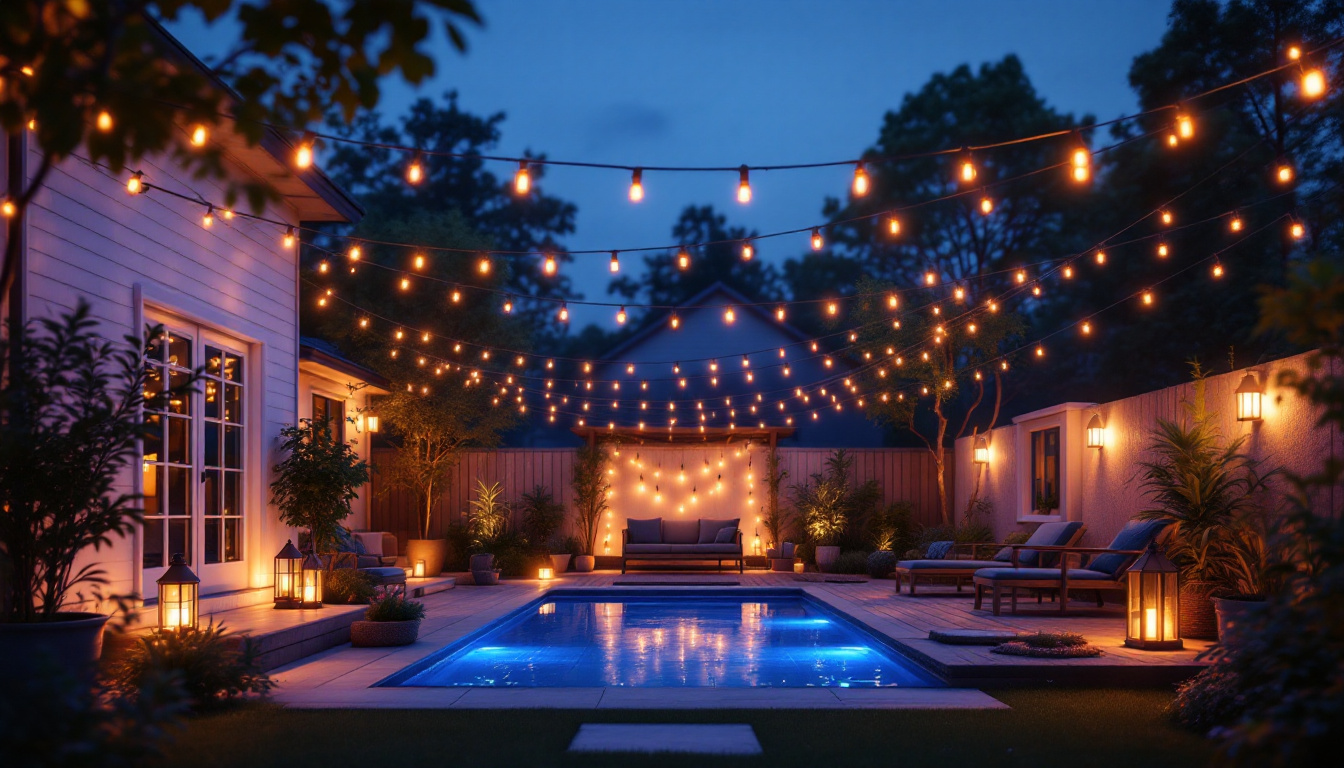
As outdoor spaces become increasingly important for residential and commercial properties, the demand for effective and aesthetically pleasing lighting solutions has surged. Lighting contractors play a crucial role in transforming yards into inviting and functional spaces. This article will provide essential tips for lighting contractors focusing on light posts for yards, ensuring that installations not only meet client expectations but also enhance the overall ambiance.
Light posts serve multiple purposes in outdoor environments. They provide safety, security, and aesthetic appeal, making them a vital component of landscape design. Understanding their significance can help lighting contractors make informed decisions when selecting and installing these fixtures.
One of the primary functions of light posts is to enhance safety in outdoor areas. Well-lit yards deter potential intruders and reduce the risk of accidents. Lighting contractors should consider the placement of light posts to illuminate pathways, driveways, and other critical areas. This not only improves visibility but also creates a welcoming atmosphere for guests. Furthermore, strategically placed light posts can help prevent falls and injuries by clearly marking steps, ramps, and other changes in elevation. In commercial settings, adequate lighting can also play a crucial role in ensuring the safety of customers and employees, particularly in parking lots and entryways during nighttime hours.
In addition to safety, light posts contribute significantly to the aesthetic value of a property. They can complement the architectural style of a home or business, adding character and charm. Contractors should take into account the design, material, and finish of the light posts to ensure they align with the overall landscape theme. For instance, vintage-style lanterns can evoke a sense of nostalgia in a historic neighborhood, while sleek, modern fixtures can enhance a contemporary setting. Additionally, the use of decorative lighting elements, such as colored bulbs or unique shapes, can create a stunning visual impact, transforming outdoor spaces into enchanting areas for gatherings and events. The right light posts can also highlight landscaping features, such as trees or flower beds, adding depth and interest to the overall design.
Selecting the appropriate light post involves several considerations. From style and material to functionality and energy efficiency, each factor plays a role in the overall success of the lighting project.
The style of the light post should harmonize with the surrounding environment. Whether a client prefers a modern, sleek design or a traditional, ornate fixture, lighting contractors must offer a range of options. Additionally, the height and scale of the light post should be proportionate to the landscape to avoid overwhelming or underwhelming the space. For urban settings, contemporary designs with clean lines may complement the architecture, while in historical districts, vintage-style posts can enhance the charm. Furthermore, the color and finish of the light post can also affect its visual impact, with options ranging from classic black or bronze to vibrant colors that can add a playful touch to parks or recreational areas.
Light posts are available in various materials, including aluminum, steel, and plastic. Each material has its advantages and disadvantages in terms of durability, maintenance, and cost. For instance, aluminum is lightweight and resistant to rust, making it a popular choice for outdoor applications. On the other hand, steel offers greater strength and stability, which can be beneficial in areas prone to high winds or heavy snowfall. Contractors should assess the specific needs of the project and recommend materials that will withstand the elements while maintaining their appearance over time. Additionally, some clients may prefer eco-friendly options, such as recycled materials or sustainably sourced wood, which can contribute to a more environmentally conscious project. This consideration not only enhances the aesthetic appeal but also aligns with the growing trend towards sustainability in urban planning.
As sustainability becomes a priority for many clients, energy-efficient lighting options are increasingly in demand. LED light posts, for example, consume significantly less energy than traditional incandescent bulbs and have a longer lifespan. Lighting contractors should educate clients on the benefits of energy-efficient solutions, which can lead to cost savings and a reduced environmental impact. Moreover, smart lighting technology can be integrated into these systems, allowing for features such as motion sensors and dimming capabilities that further enhance energy conservation. This technology not only optimizes lighting based on the time of day or foot traffic but also provides users with the ability to monitor and control their lighting remotely, making it a highly attractive option for both residential and commercial applications. As cities continue to evolve towards smart infrastructure, the integration of energy-efficient light posts will play a crucial role in shaping sustainable urban environments.
Proper installation is crucial for the performance and longevity of light posts. Adhering to best practices ensures that the fixtures operate effectively and safely while meeting local codes and regulations.
Before installation, a thorough site assessment is essential. Lighting contractors should evaluate the yard’s layout, existing structures, and landscape features. This assessment helps determine the optimal locations for light posts, ensuring they provide adequate illumination without creating glare or dark spots. Additionally, understanding the soil type and drainage patterns can influence the installation method.
When installing light posts, electrical considerations are paramount. Contractors must ensure that the wiring is appropriately rated for outdoor use and complies with local electrical codes. It is essential to bury electrical lines at the correct depth to avoid damage and ensure safety. Furthermore, incorporating timers or smart controls can enhance functionality and energy efficiency.
Post-installation, educating clients about maintenance is vital for the longevity of light posts. Regular cleaning and inspections can prevent issues such as bulb burnout and corrosion. Contractors should provide clients with a maintenance schedule and tips for keeping their outdoor lighting in optimal condition.
The rise of smart home technology has transformed the way outdoor lighting is approached. Lighting contractors can enhance their offerings by integrating smart technology into light post installations.
Smart controls allow clients to manage their outdoor lighting remotely. This can include adjusting brightness, setting schedules, or even controlling the lights via voice commands. By incorporating smart technology, contractors can provide added convenience and flexibility, appealing to tech-savvy clients.
Integrating motion sensors into light posts enhances security and energy efficiency. These sensors can automatically turn on lights when movement is detected, ensuring that areas are illuminated only when needed. This feature not only saves energy but also provides an additional layer of security for the property.
Lighting contractors must be aware of local regulations and codes governing outdoor lighting installations. Compliance is essential to avoid fines and ensure the safety of the installation.
Many municipalities have specific zoning laws that dictate the type and intensity of outdoor lighting allowed. Contractors should familiarize themselves with these regulations to ensure that their installations do not violate any local ordinances. This knowledge can also help in advising clients on the best lighting solutions for their properties.
In some cases, obtaining permits may be necessary before installing light posts. Contractors should check with local authorities to determine if permits are required and assist clients in navigating the application process. Ensuring that all necessary permits are secured can prevent delays and complications during the installation phase.
A well-thought-out lighting plan is essential for achieving the desired ambiance and functionality in outdoor spaces. Lighting contractors should work closely with clients to create a comprehensive plan that addresses their needs and preferences.
Effective outdoor lighting often involves layering different types of light sources. This can include ambient lighting for general illumination, task lighting for specific areas, and accent lighting to highlight architectural features or landscaping. By combining these elements, contractors can create a dynamic and visually appealing lighting scheme.
The color temperature of outdoor lighting can significantly impact the mood and atmosphere of a space. Warmer tones create a cozy and inviting environment, while cooler tones can evoke a more modern or industrial feel. Contractors should discuss color temperature options with clients to ensure the final result aligns with their vision.
Effective communication and education are key components of successful lighting projects. Lighting contractors should prioritize client engagement throughout the process.
From the initial consultation to project completion, setting clear expectations is crucial. Contractors should communicate timelines, costs, and potential challenges to ensure clients have a realistic understanding of the project. This transparency fosters trust and helps prevent misunderstandings down the line.
Offering clients resources, such as maintenance guides or information on smart lighting technology, can empower them to make informed decisions. Providing these materials not only enhances the client experience but also positions contractors as knowledgeable professionals in the field.
Light posts play a vital role in enhancing the safety, security, and aesthetics of outdoor spaces. By understanding the importance of these fixtures and implementing best practices in selection, installation, and maintenance, lighting contractors can deliver exceptional results for their clients. Embracing smart technology and staying informed about local regulations further enhances the value of their services. With effective communication and a well-designed lighting plan, contractors can transform yards into beautifully lit environments that meet the diverse needs of their clients.
Ready to elevate your lighting projects with the best in class solutions? At LumenWholesale, we offer an extensive range of spec-grade light posts that will meet and exceed your clients’ expectations. Our commitment to quality, affordability, and convenience ensures that you have access to premium lighting products at wholesale prices, with the added benefit of free shipping on bulk orders. Don’t let middleman markups dim your project’s potential. Choose LumenWholesale for Wholesale Lighting at the Best Value and light up your yard installations with confidence and cost-efficiency.

Discover essential insights into LED tape lights tailored for lighting contractors.

Discover how LED light switches are transforming the lighting industry with real-world success stories from contractors.

Discover why purchasing architectural track lights in bulk from local distributors might not be the best choice.

Discover the essentials of choosing the perfect outdoor weatherproof box for Deco Mesh installations in this comprehensive guide tailored for lighting contractors.